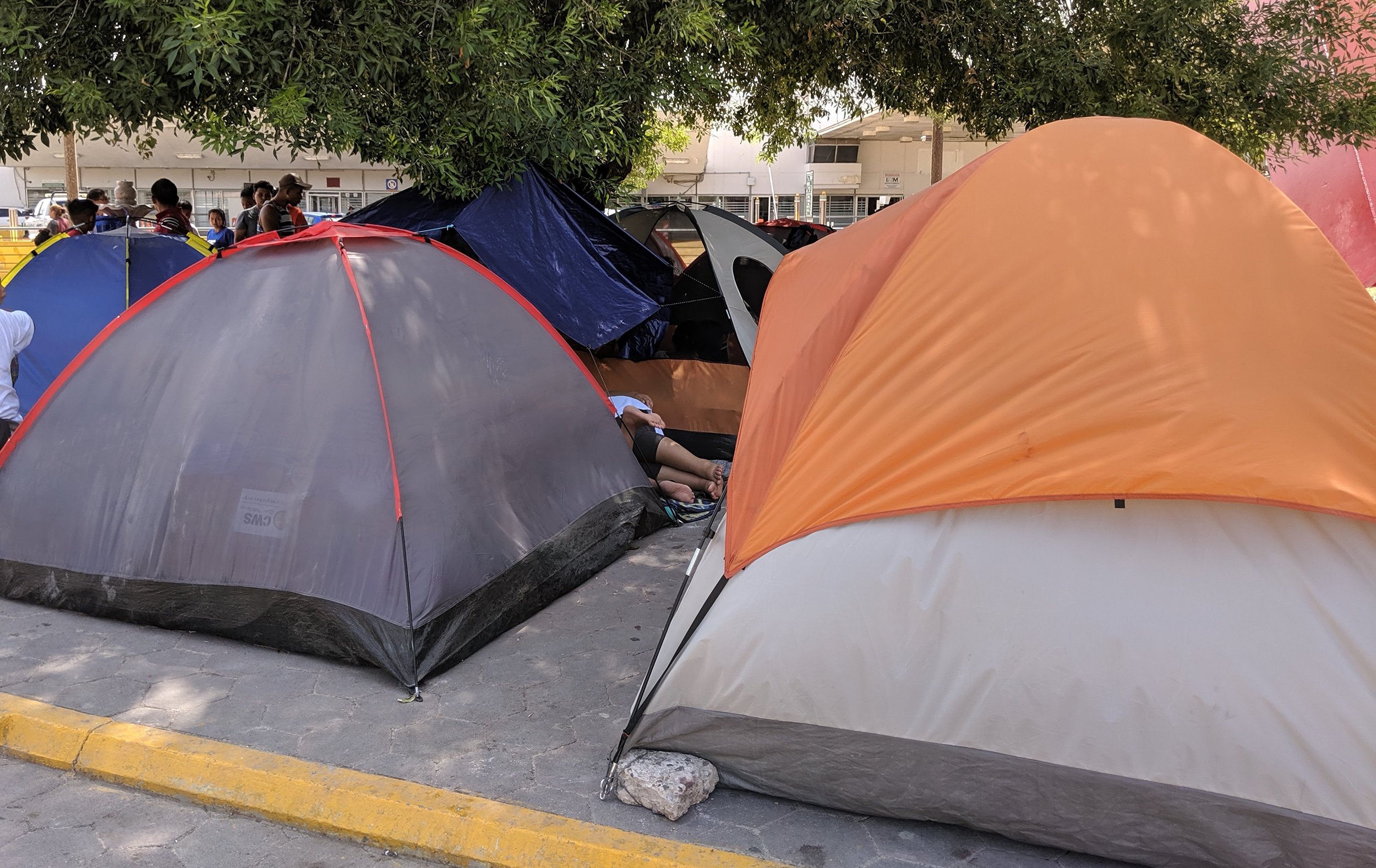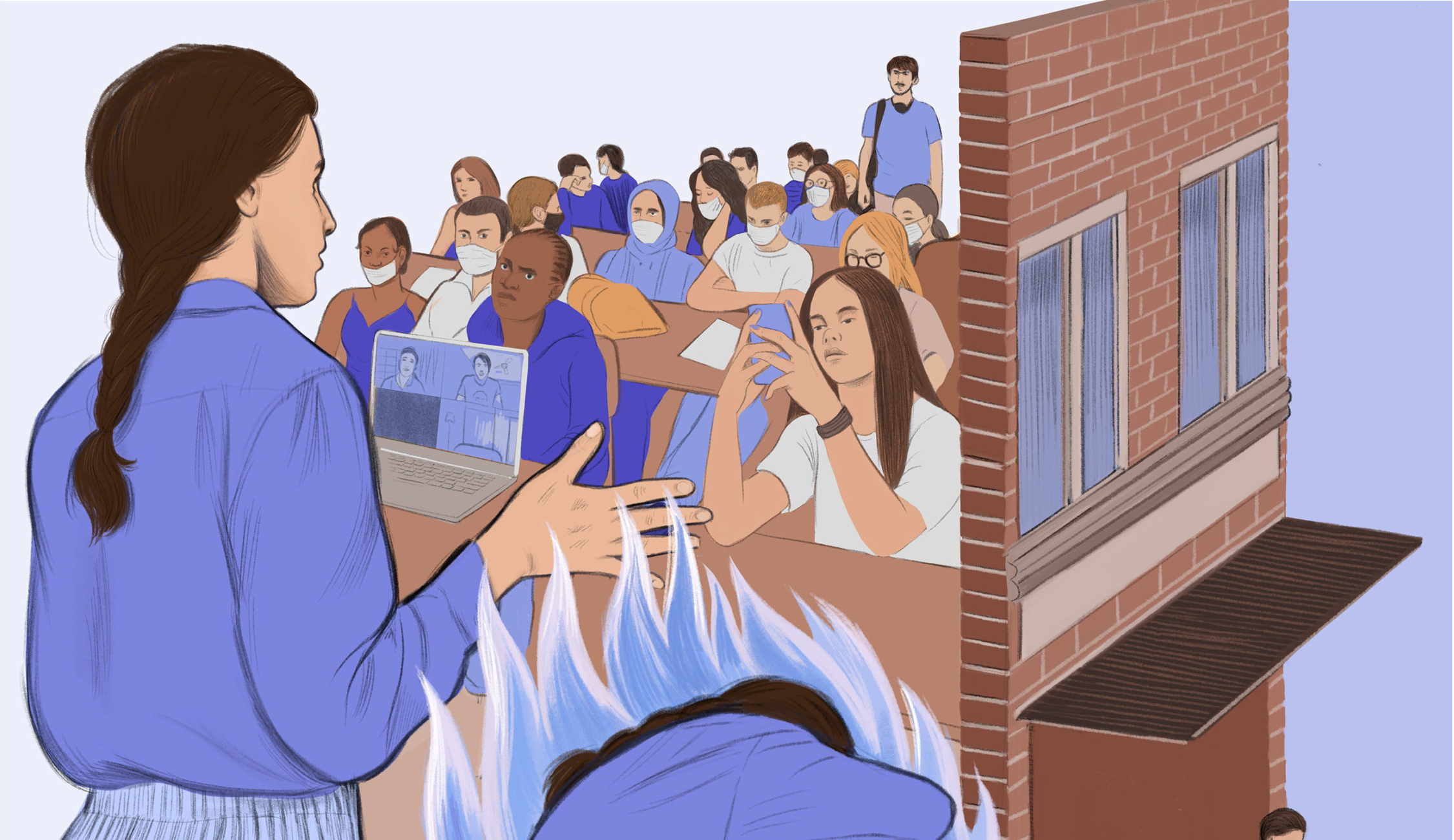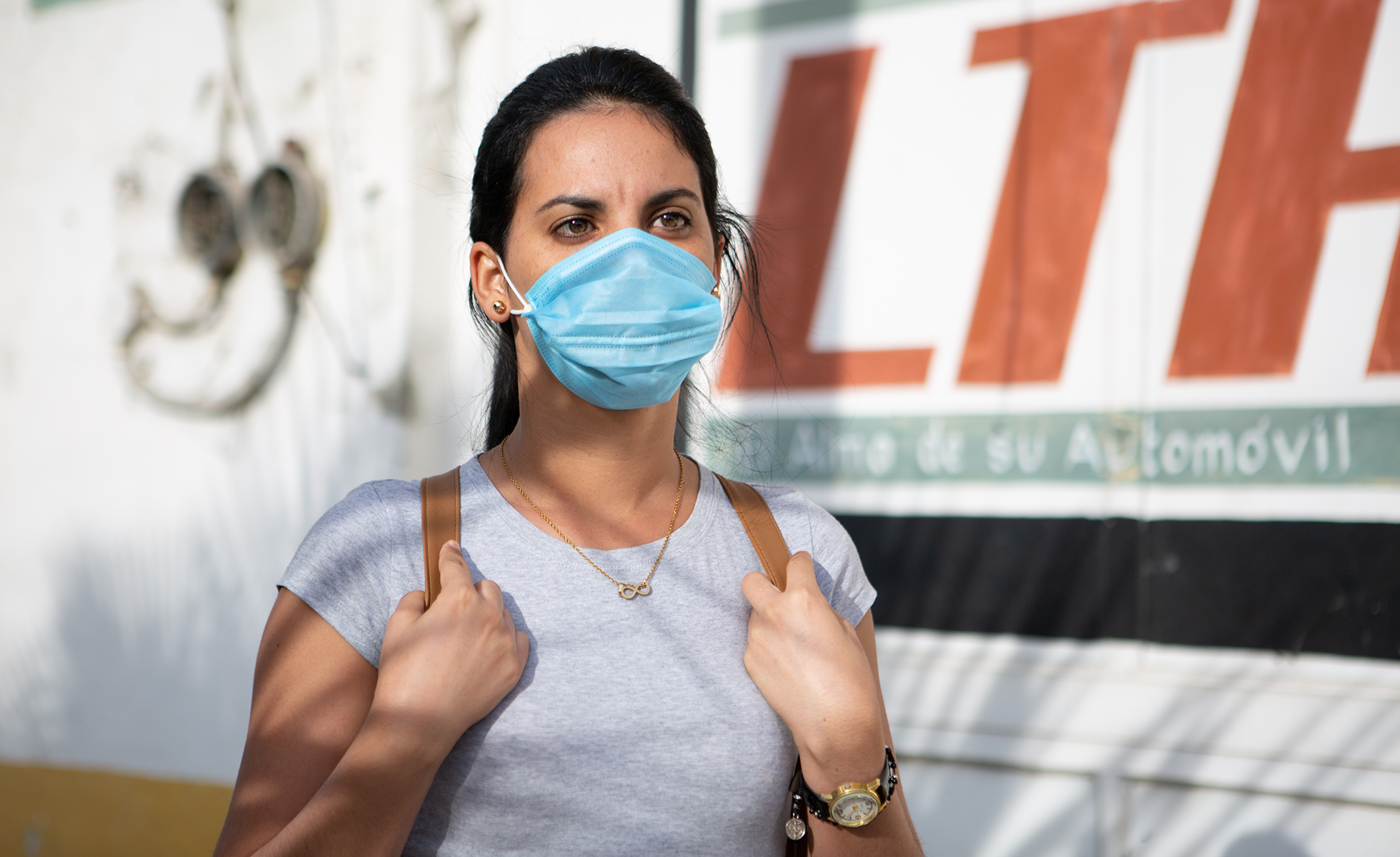
Thousands of Migrants in Matamoros Set to be Moved to a New Encampment, Advocates Say
According to camp volunteers, Mexican immigration officials plan to move migrants to an abandoned Matamoros soccer field as early as today.
Above: A migrant encampment near the international bridge in Matamoros.
The COVID-19 pandemic has turned Holy Week—a time when Matamoros’ streets and churches are typically packed to the brim—into a private affair. But on Friday, as parishioners were asked to stay home and pilgrimages across the city were cancelled, officials are set to begin forcibly moving thousands of asylum-seekers waiting in Matamoros at the Gateway International Bridge to a camp 4 miles away, according to advocates and volunteers. Between a holiday and a pandemic, advocates said everyone’s eyes are turned away—perfect timing for a concerning move.
In audio distributed to migrants by text message on Thursday, Pastor Abraham Barberi, a volunteer at the Matamoros encampment, warned that Mexican immigration authorities and the local government had decided to move people in the camp elsewhere.
“Brothers and sisters, we are praying,” Barberi said in the recording. “This is something new and impactful, and we will see something good come from this. Be careful and don’t resist, because their decision has been made to move everyone to the new camp.”
Barberi says that advocates and volunteers were originally told some migrants would be moved to another camp to prevent the spread of COVID-19. However, he said he and other advocates recently learned the migrants—who are waiting for asylum under the Trump administration’s Remain in Mexico policy—will all be moved to an abandoned stadium, whether they want to or not.
A video of the new campsite obtained by the Observer shows a large open field with a white fence surrounding it and a gate blocking the entrance. A few large tents stand in the middle with tables and chairs, and to the side there are a few dozen portable restrooms.
“As you can tell, there are no trees here to protect us from the sun and the heat,” an unidentified man said in the video. “Just these three tents you see here. You can’t begin to imagine the heat we are facing here, it is a sun like no other. It is double what we are feeling in the camp. This is terrible, terrible.”
As the camera zooms in on a guard watching the gate, the man adds that rumors about Mexican immigration authorities controlling who came and went from the camp were true.
“It surprises me the [Instituto Nacional de Migración] officers would want to be doing this on this day. It is devastating to think of these people being taken and nobody really came up with a plan.”
City of Matamoros press officers were not available for comment at the time of publication; offices were closed in observance of the holiday.
Andrea Rudnik, co-founder of aid group Team Brownsville, said her organization has heard different things moment to moment. A few weeks ago, several NGOs that work in the camp were told it would be split up to give people more space during the coronavirus outbreak, and that Mexican officials had started to build a new encampment next to some of the colonias.
Rudnik said local newspapers began to leak pictures. Rumors spread that it was a COVID-19 quarantine area, and locals began complaining that the new encampment was too close to their land. “You can’t go anywhere in Matamoros and not be next to a colonia,” Rudnik said. “There is nowhere you can go that you are not infringing on someone’s border.”
Now, Rudnik said they are concerned that they will be unable to provide resources to the new camp—they previously had been advised by locals to avoid the area because of safety concerns.
“Four miles into Matamoros and everything changes,” Rudnik said.
At the last camp, up to 30 Team Brownsville volunteers a day walked over the international bridge. But when the pandemic subsides, Rudnik’s not sure how many people will be willing to venture into an area where they have heard reports of murders and kidnappings. Rudnik added that crossing will now also require extra resources like a car. That will limit how many materials they can bring and require more time commitment.
“A lot of people are fearful of going into Mexico,” Rudnik said. “I think there is a sense of security of being able to look out and see the United States but being 4 miles out there is no longer that sense of security.”
Rudnik believes the move has little to do with the virus: Now 2,000 people will be in close quarters. Rather, she thinks it’s about having greater control over the migrants in the camp. She said Mexican officials have not provided a plan for how the migrants will be fed and what liberties they will have to move about and travel. And this transition is all happening as people are mostly sequestered in their homes or celebrating the holiday.
“The other ironic thing is that this is Good Friday, this is the holiest of days for them,” Rudnik said. “It surprises me the [Instituto Nacional de Migración] officers would want to be doing this on this day. It is devastating to think of these people being taken and nobody really came up with a plan.”
Representatives of the Instituto Nacional de Migración, Mexico’s immigration authorities, were not reachable for comment at the time of publication.
Find all of our coronavirus coverage here.
Read more from the Observer:
-
Migrants and Advocates Call to Close Detention Centers as COVID-19 Spreads: A new lawsuit argues that an outbreak in detention could overwhelm local health care systems.
-
As Texans are Exposed to Dangerous Pesticides, Lawmakers Aren’t Doing Anything: Pesticide drift is exposing rural Texans to dangerous chemicals. But lawmakers are more concerned with how that is eating into Big Ag’s balance sheet.
-
The Future of Fair Housing in Texas: John Henneberger has spent 45 years advocating for Texans’ right to have a safe, affordable place to live.


